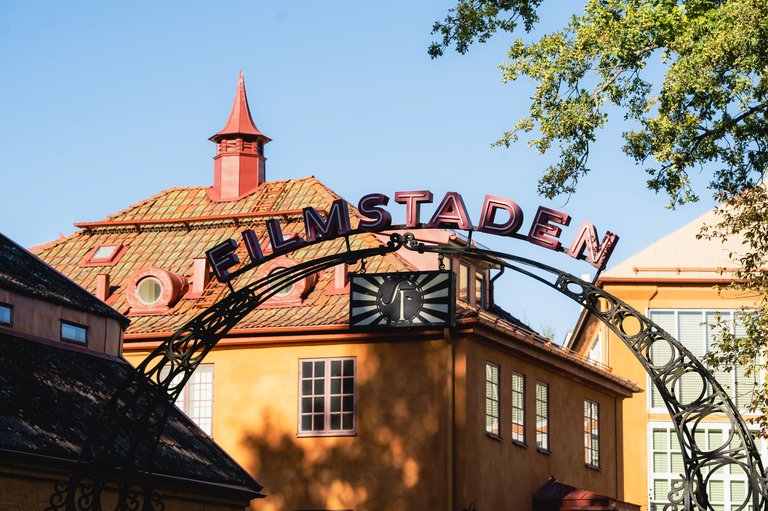Discover Stockholm's Hollywood – Gamla Filmstaden
Publish date: 22 October 2024
Tucked away between the residential buildings of Solna, Gamla Filmstaden is a glimpse into a time when Sweden was at the forefront of the film medium. The film studio was home to directors like Ingmar Bergman and Victor Sjöström, as well as stars such as Ingrid Bergman, Max von Sydow, and Greta Garbo. "It was a secretive place, that only allowed showbiz people in through the gate", says Mikaela Kindblom, manager at Stiftelsen FIlmstadens Kultur. "It truly was Sweden's Hollywood".
New Year’s Eve, near midnight. David Holm, a down-on-his-luck wino, is spending the last night of the year chugging brännvin at the local cemetery with his two drinking buddies. The mood is upbeat… until it isn’t.
News reaches the trio that Anna, David’s ailing sister, wants to see him on her deathbed. David nonchalantly dismisses the messenger, waving him off like an annoying gnat. Furious at David’s indifference, his two companions begin to push him around. Pushing turns into wrestling, and wrestling turns into punching. Before anyone can break up the scuffle *CRASH*; David is knocked out with a bottle.
As David wakes up alone, head and back sore from the brutal pummeling he received moments ago, the graveyard’s clock strikes twelve. Out of nowhere, a rickety horse carriage materializes in front of him. Holding the horse’s reins is a spectral figure, a scythe resting in his arms. David stares in disbelief as the stranger pulls back his hood, revealing a familiar face; his friend Georges, who died exactly one year ago. After a brief conversation, David comes to a chilling realization; David is, in fact, dead.
This ghastly scene is, thankfully, not from real life. It’s from the classic silent film The Phantom Carriage, Victor Sjöström’s adaptation of Selma Lagerlöf’s supernatural redemption story Thy Soul Shall Bear Witness!. Completed in 1921, it’s the first feature to be produced and shot at Svensk Filmindustri’s then state-of-the-art facility in Solna; Filmstaden Råsunda (today called Gamla Filmstaden). The graveyard set was built outside, in front of the soundstage, on what today is called Ingmar Bergman’s Square.
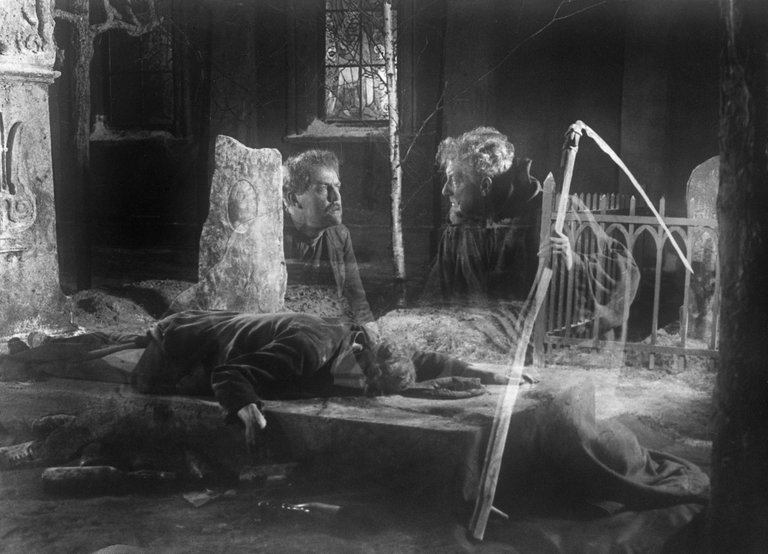
“There are several other locations on the premises we can point to during our guided tours”, explains Mikaela Kinblom, manager at Stiftelsen Filmstadens Kultur (Swedish: The Filmstaden Culture Foundation). “For example, we can show visitors where Max von Sydow, death at his heels, is hurrying back home on horseback in The Seventh Seal (1957). But you might need some imagination or a visual aid.”
A golden age of Swedish film
The first orange studio buildings (terracotta or okra-colored, depending on who you ask) of Gamla Filmstaden were completed in 1920. Construction took less than a year and time was of the essence; as Swedish film entered its first Golden Age, it needed a place to grow and expand.
Two directors in particular, Mauritz Stiller and Victor Sjöström, had put Sweden on the cinematic world map. Films like A Man There Was (1917) and Sir Arne's Treasure (1919) – with deep character studies, innovative optical effects, and camera techniques – found an international audience. However, the duo's artistic ambitions had outgrown their small studio and workshop on Lidingö. Hence, Svensk Filmindustri AB was founded with the expressed purpose of building a new studio in Råsunda.
"They were true cinema pioneers, and among the first filmmakers interested in film, not only as entertainment but as an art form", explains Mikaela Kindblom. "They studied films from Germany, Denmark, and Hollywood and fostered an atmosphere of cooperation."
The designated plot of land in Solna was ideal. Previously occupied by an ostrich farm – providing milliners and fashion designers with fluffy plumage – it was remote and surrounded by nature; a perfect location for film directors to work in peace.
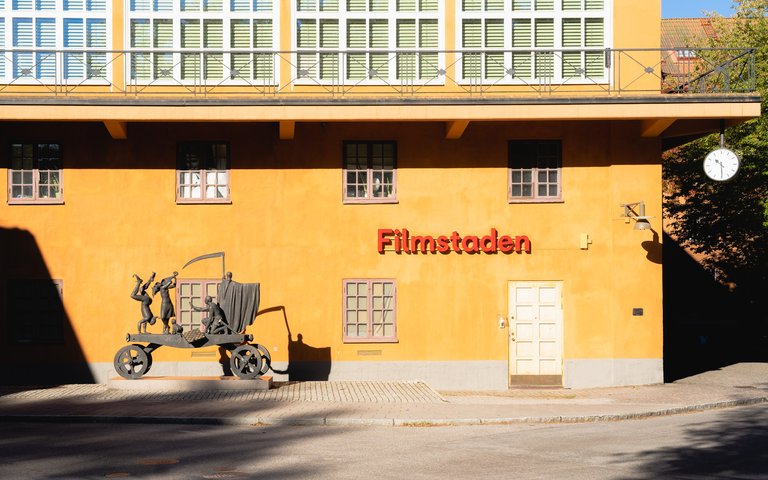
Filmstaden Råsunda became not only a home for Sjöström and Stiller's visions but also the epicenter of Swedish film in general. The state-of-the-art facilities and fancy equipment also put the studio in a league of its own globally.
"Swedish film was famous for producing the most elegant and expensive movies", says Mikaela Kindblom. "Even as they got competition from other studios in Stockholm, like Sandrews and Europafilm, the best films were produced in Råsunda. Especially when sound was introduced."
At its height, the studio lot was comprised of 40 buildings. Soundstages, offices, screening rooms, film laboratories, workshops, costume, and prop storage. Everything a filmmaker needed to take a story from the pages of a script into a developed roll of celluloid film ready to be screened in front of an audience (or in the case of early film history; highly flammable nitrate film stored in a secure casemate).
"We refer to this period as "the dream factory"-years, meaning the 20s, 30s, 40s, and 50s", continues Mikaela. "A secretive place, guarded by a gatekeeper and his feared dogs, that only let showbiz people in through the gates. Surrounded by a tall wall to keep nosy autograph hunters away, it truly was Sweden's Hollywood".
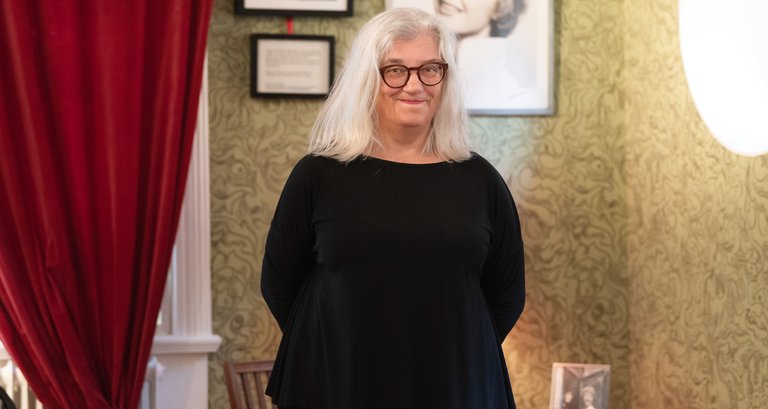
Mikaela Kindblom: 5 tips for movie lovers
During Filmstaden's heyday, the studio churned out 20 feature films each year. In total, some 400+ films were made, featuring a who's-who of Swedish Cinema: Alf Sjöberg, Hasse Ekman, Ingrid Bergman, Greta Garbo, Tage Danielsson, Max von Sydow, Bibi Andersson, Nils Poppe, Thor Modén, and Liv Ullmann to name a few. And, of course, Ingmar Bergman. The legendary auteur directed 24 films in Råsunda. For example The Seventh Seal (1957), The Virgin Spring (1960), and Hour of the Wolf (1968).
And that's not even mentioning hundreds of commercials and newsreels filmed at the studio.
Falling out of fashion
The movie stars and directors left, and the film cameras ran out of celluloid, a long time ago, though.
Today, only eight of the former studio lot's buildings remain. The smaller soundstage, a cantina, a laboratory, several office buildings, and a casemate.
Stiftelsen Filmstadens Kultur ("The Filmstaden Culture Foundation") has taken up residence in the former gatehouse, converting it into a café and mini-museum.
Although Gamla Filmstaden, as it's called today, sporadically pops up as a filming location now and then, production here stopped by and large in the early 1970s.
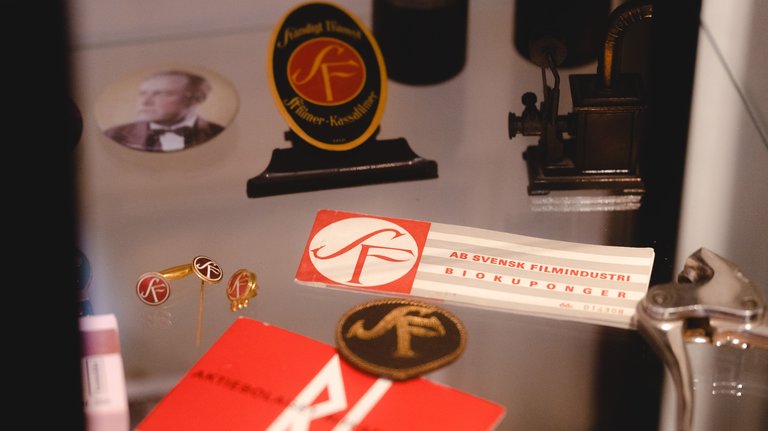
The studio isn't as secluded and as it used to be, either; as Stockholm expanded in the middle of the 20th century, so did the municipality of Solna. Construction on Filmstaden's neighboring residential buildings started in the 1940s, and the nearby metro station of Näckrosen opened for traffic in 1975.
City development might have made the surroundings cramped. A more existential threat to the local film industry though, explains Mikaela Kindblom, was television.
"It was the first nail in the coffin. In a way, TV started producing movies, and the business simply moved elsewhere in the 1960s. Like SVT [Swedish National Television] and the Swedish Film Institute, where filmmakers could find the newest and best equipment".
However, the final death knell rang as traditional studio techniques and old movie aesthetics simply fell out of fashion, Mikaela explains. Inspired by their Nouvelle Vague-peers in France, a new generation of Swedish filmmakers wanted to leave stuffy studios behind. Coincidentally, modern cameras and sound equipment – smaller and more mobile – allowed them to capture the grit of the real world.
"Bo Wideberg refused even to set foot on the soundstage. The old guard scoffed at him and photographer Jörgen Persson, when they shot Elvira Madigan (1967) on location. But just look how beautiful and fascinating the film turned out."
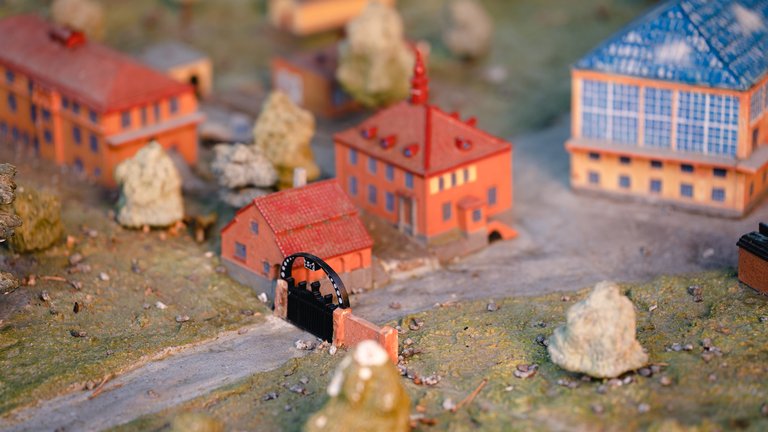
Keeping the dream (factory) alive
Filmstadens Kultur was formed in 2002, to keep the memory of the now-defunct dream factory alive, mainly with guided tours. The foundation also organizes public events like a popular Christmas Market, a summer festival, a film club, and school cinema showings.
"There's also a cinema here", says Mikaela Kindblom, referring to the modern four-screen repertoire theater located in the old soundstage. "But we've also renovated the former dailies screening room in the basement into a small, cozy, theater. The running joke is that Ingmar Bergman's ghost is haunting us, whenever we experience technical difficulties."
Mikaela Kindblom, a film scholar and journalist, has worked at the foundation since 2011. She started helping out as a tour guide but is now the manager of daily operations.
"Let's not forget that Gamla Filmstaden has persevered. Riksteatern [The National Theater Company] moved here for a time, and local artists and musicians kept the bulldozers at bay. As Solna grew, some voices wanted to level the whole area."
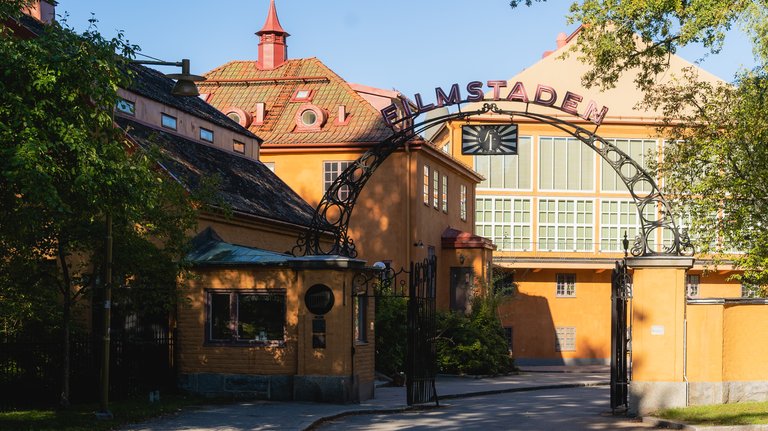
And persevered it has. Although a far cry from its mid-20th-century filmmaking glory days, the legacy of Sweden's old film mecca lives on.
In 2024 Gamla Filmstaden was one of eight new additions to the European Film Academy's prestigious "Treasures of European Film Culture"-list, deeming the former studio an important cultural heritage.
"It feels great. The Academy has directed a spotlight at us, signaling that we are worth visiting and preserving". Mikaela says.
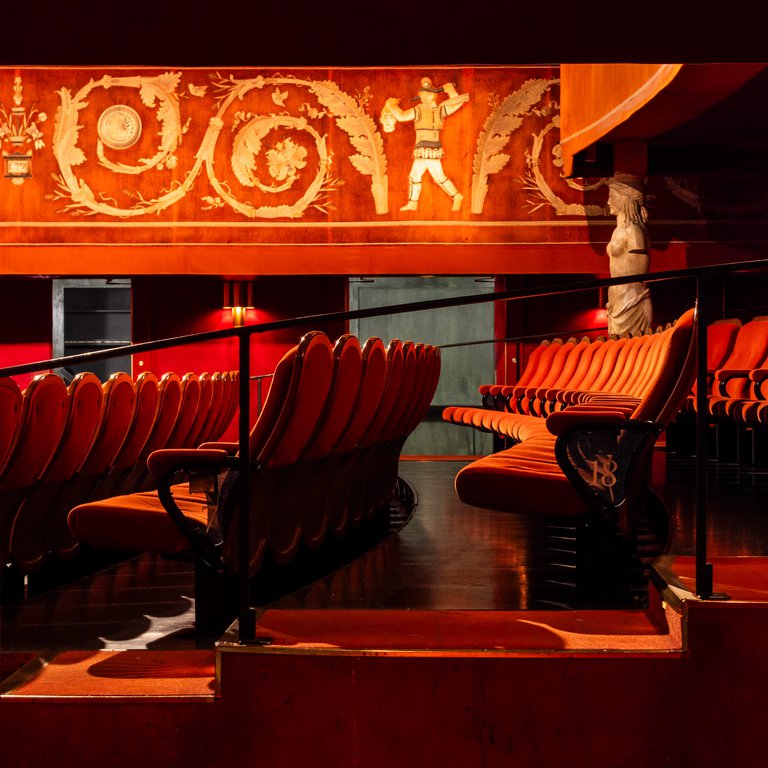
Movie night in Stockholm
Mikaela says that younger visitors and school children are fascinated by behind-the-scenes stories and pictures during the guided tours. She hopes the recognition will make even more people interested in the studio complex's storied history.
"Historically, it puts us in the same league as Rome's Fontana di Trevi where Anita Ekberg waded in La dolce vita, or the world-famous bookshop in Notting Hill. But it's also among the larger locations [that has gotten the recognition], and one of few places in northern Europe with an antique, preserved, studio".
11 films made in Gamla Filmstaden
Over 400 feature films have been produced at – and in the surroundings of – Gamla Filmstaden. The list grows even longer if you include commercials and news reels.
While the buildings occasionally pop up as a backdrop in more recent productions, the studio effectively seized operations in 1973. Here are a few examples that have been shot entirely, or in part, at the lot in Solna.
- The Phantom Carriage (1921) – Based on Selma Lagerlöf's novel Thy Soul Shall Bear Witness!. The first film to be produced at the studio.
- The Saga of Gosta Berling (1924) – Another Selma Lagerlöf-adaption, directed by Mauritz Stiller. Widely considered as Greta Garbo's breakout film.
- Servant's Entrance (1932) – One of Gustaf Molander's most popular romantic comedies. With 64 feature films (63 produced at Filmstaden Råsunda), Molander is the most productive director in Swedish film history.
- Guest House Paradise (1937) – The archetypical pilsnerfilm ("beer movie"), starring popular character actor and comedian Thor Modéen. Today something of a cult phenomenon, pilsnerfilmer were considered low-brow, even controversial at the time.
- Torment (1944) – Alf Sjöberg's psychological drama about students at a college, and their sadistic professor Caligula. Written by an up-and-coming Ingmar Bergman.
- Jazzy Boy (1957) – Actor-director Hasse Ekman's musical hommage to the variety shows of the 1930s-1940s. Hailing from the famous Ekman family of entertainers, Hasse was perhaps Ingmar Bergman‘s biggest rival in the 1940s and early 1950s.
- The Seventh Seal (1957) – Arguably Ingmar Bergman's most iconic film. The story of medieval knight Antonius Block's journey home, and his deadly game of chess, propelled Bergman to international fame.
- Docking the Boat (1965) – Beloved satire comedy set during a crayfish party in the Stockholm archipelago. Written by comedy-duo Hans Alfredsson and Tage Danielsson, directed by Danielsson.
- The Emigrants / The New Land (1971-1972) – Jan Troell's two-part adaption of Vilhelm Moberg's epic saga about settlers leaving Sweden for North America. Nominated for several Academy Awards.
- The Pippi Longstocking series (1969–1973) – Television series (edited into four feature films) about the beloved children's book character. Several of the episodes were filmed at Filmstaden Råsunda.
- The Glass-Blower's Children (1998) – Period drama starring Stellan Skarsgård and Pernilla August, based on Maria Gripe's eponymous novel. Among the few films made at Gamla Filmstaden after its official closing.
